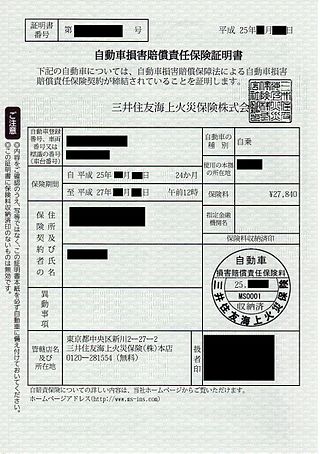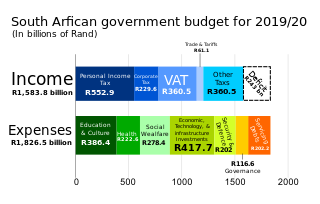Current regulations

VED across the United Kingdom is collected and enforced by the Driver and Vehicle Licensing Agency (DVLA). Until 2014, VED in Northern Ireland was collected by the Driver and Vehicle Agency there; responsibility has since been transferred to the DVLA. [5]
The licence is issued upon payment of the appropriate VED amount (which may be zero). Owners of registered vehicles which have been licensed since 31 January 1998 and who do not now wish to use or store a vehicle on the public highway are not required to pay VED, but are required to submit an annual Statutory Off-Road Notification (SORN). [6] Failure to submit a SORN is punishable in the same manner as failure to pay duty when using the vehicle on public roads.
Until 1 October 2014 a vehicle licence (tax disc) had to be displayed on a vehicle (usually adhered inside the windscreen on the nearside, thus easily visible to officials patrolling roads on foot) as evidence of having paid the duty. Since that date, the circular paper discs have not been issued and there is no longer a requirement to display a disc as the records are now stored in a centralised database and accessible using the vehicle registration plate details. [7]
Cars
There are three payment schedules in effect, depending on whether the car was first registered before or after 1 April 2017, or before 1 March 2001. Further changes will come into effect in April 2025, affecting new and existing electric vehicles.
Registered before 1 March 2001
For cars registered before 1 March 2001 the excise duty is based on engine size. [8]
| Cost as of 1 April 2022 (£) (single annual payment) | |
|---|---|
| Vehicle engine size <1549 cc | 180 |
| Vehicle engine size >1549 cc | 295 |
Registered before 1 April 2017

For vehicles registered between 1 March 2001 and 31 March 2017 charges are based on theoretical CO2 emission rates per kilometre. The price structure was revised from 1 April 2013 to introduce an alternative charge for the first year (the standard cost was not changed, and remained the same as for 2001 onwards). The "first year rate" only applies in the year the vehicle was first registered and is said by the government to be designed to send "a stronger signal to the buyer about the environmental implications of their car purchase". [8] [9]
Alternative fuel cars (TC59) all warrant a £10 discount from the below, except when zero-rated. Charges as applicable from 1 April 2022:
| Car emission band | Standard cost (£) | Notes |
|---|---|---|
| Band A (up to 100 g/km) | 0 | |
| Band B (101–110 g/km) | 20 | |
| Band C (111–120 g/km) | 30 | |
| Band D (121–130 g/km) | 135 | |
| Band E (131–140 g/km) | 165 | |
| Band F (141- 150 g/km) | 180 | |
| Band G (151 to 165 g/km) | 220 | |
| Band H (166 to 175 g/km) | 265 | |
| Band I (176 to 185 g/km) | 290 | |
| Band J (186 to 200 g/km) | 330 | |
| Band K (201 to 225 g/km) | 360 | Also vehicles with >225 g/km registered before 23 March 2006. |
| Band L (226 to 255 g/km) | 615 | |
| Band M (Over 255 g/km) | 630 |
Registered after 1 April 2017
The biggest changes from April 2017 are that hybrid vehicles are no longer be rated at £0, and that cars with a retail price of £40,000 and over pay a supplement for years 2 to 6. [10]
| First year rate | Second year onwards rate | |||
|---|---|---|---|---|
| CO2 emissions | Diesel cars (TC49) that meet the RDE2 standard, and petrol cars (TC48) | All other diesel cars (TC49) | Alternative fuel cars (TC59) | |
| 0g/km | £0 | £0 | £0 | £0 |
| 1 to 50g/km | £10 | £25 | £0 | £165 (£155 for alternative fuel) |
| 51 to 75g/km | £25 | £120 | £15 | £165 (£155 for alternative fuel) |
| 76 to 90g/km | £120 | £150 | £110 | £165 (£155 for alternative fuel) |
| 91 to 100g/km | £150 | £170 | £140 | £165 (£155 for alternative fuel) |
| 101 to 110g/km | £170 | £190 | £160 | £165 (£155 for alternative fuel) |
| 111 to 130g/km | £190 | £230 | £180 | £165 (£155 for alternative fuel) |
| 131 to 150g/km | £230 | £585 | £220 | £165 (£155 for alternative fuel) |
| 151 to 170g/km | £585 | £945 | £575 | £165 (£155 for alternative fuel) |
| 171 to 190g/km | £945 | £1,420 | £935 | £165 (£155 for alternative fuel) |
| 191 to 225g/km | £1,420 | £2,015 | £1,410 | £165 (£155 for alternative fuel) |
| 226 to 255g/km | £2,015 | £2,365 | £2,005 | £165 (£155 for alternative fuel) |
| Over 255g/km | £2,365 | £2,365 | £2,355 | £165 (£155 for alternative fuel) |
For cars with a "list price" over £40,000 an additional amount – the 'expensive car supplement' – is paid at the first five annual renewals, i.e. in years 2 to 6 of the vehicle's life. In April 2022 [update] this supplement was increased to £355. [11] At first the supplement applied to all types of car, but the 2020 Budget provided an exemption for zero-emission vehicles (both new and existing), effective from 1 April 2020. [12] [13]
Changes on 1 April 2025
In November 2022, the UK government announced that reduced tax rates for zero-emission vehicles would cease on 1 April 2025, making rates the same as for those with internal combustion engines. The changes affect new and existing vehicles as follows: [14] [15]
- Zero-emission cars first registered on or after 1 April 2017 will pay the 1–50g/km rate in their first year of registration, and the standard annual rate in subsequent years.
- The £10 reduction for alternative fuel vehicles and hybrid vehicles will be removed, bringing them also onto the standard rate.
- The exemption from the expensive car supplement was already due to end in 2025.












